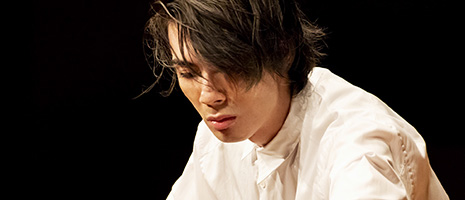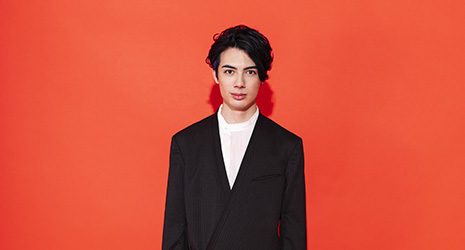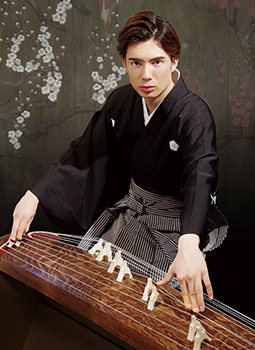Home > Highlighting JAPAN > Highlighting Japan December 2019 > The Power of the Young
Highlighting JAPAN


The Koto: Into Tomorrow
University student and professional musician Konno Leo is leading the traditional Japanese musical instrument that is the koto into new dimensions while learning from and maintaining its age-old traditions.
The standard koto comprises thirteen strings, each with a movable bridge, strung over a long body made of paulownia wood. The koto is typically placed on a stand on the floor and is played using three plectra on the right hand and bare fingers on the left. Based on an instrument introduced from China in the eighth century, the koto has played a key role in the establishment of Japan’s unique music traditions.
Konno Leo, a third-year student in the Department of Traditional Japanese Music at Tokyo University of the Arts, plays the koto with an apparently effortless grace, performing and recording in a variety of styles and in genres ranging from classical koto music to jazz. Konno says, “I collaborate with players of many instruments, including violin and flute, but what I cherish are the sounds which only the koto can produce.”
Konno says that what attracts him most about the koto are its “slightly awkward features as an instrument. The standard koto has only thirteen strings, so the range of sound is limited; and the instrument doesn’t produce a lot of volume, either. But, because of this, I am particular about each sound; for example, sounds that resonate in the performance space when performing, and sounds that make the listeners concentrate. I think this is where the koto’s identity is born.”
Konno, the son of an American father and a Japanese mother, attended an international school in Yokohama from elementary through high school. All students start to learn to play the koto in music class in the elementary school. One of the instructors at the school is the American koto player Curtis Patterson. Konno says that he enjoyed the freedom of playing koto amongst students of many nationalities. He received a silver medal at a national elementary and junior high school music competition, which he first entered while in elementary school, and received the grand prix award as a third-year student in junior high school. Later, he gained further prominence by winning a major contest for traditional music that included adult participants when he was a second year student in high school. Konno released his first album in March 2017, under the stage name, LEO.
In April, immediately after his debut, he entered university and devoted himself wholly to his studies, since his music department prohibits performances outside the university during the first year. Konno says, “Students learn everything from etiquette to posture over the course of the year. As I had been performing as I liked up until that point, it was a difficult year for me.”
Nevertheless, the experience was useful. Relearning classical Japanese music that was written about 100 to 400 years ago also had a great effect on him. “In traditional music, there are unique musical intervals, and I’ve finally become able to incorporate these when playing modern koto music and music of other genres. I’ve been evaluated as having grown a lot in recent performances, but I’ve personally experienced my growth, as well.”
Konno says that being in an arts university with students majoring in other instruments and other fine arts has expanded his world. Restarting his performing in his second year, he developed plans for performances with artists from a variety of fields, including spatial performances, and turning the act of performing itself into an art form has become one of Konno’s goals. Konno plans to incorporate many koto pieces that he composed himself in his latest album, which is currently in production. Among these is a cutting-edge piece of music in which the koto’s timbre is electrically altered with the use of an effector.
Says Konno, “There are so few children learning koto today in Japan. We cannot let this long-standing traditional culture fade away. That is why I want to show the appeal of the koto to many more people through my work.”
© 2009 Cabinet Office, Government of Japan







